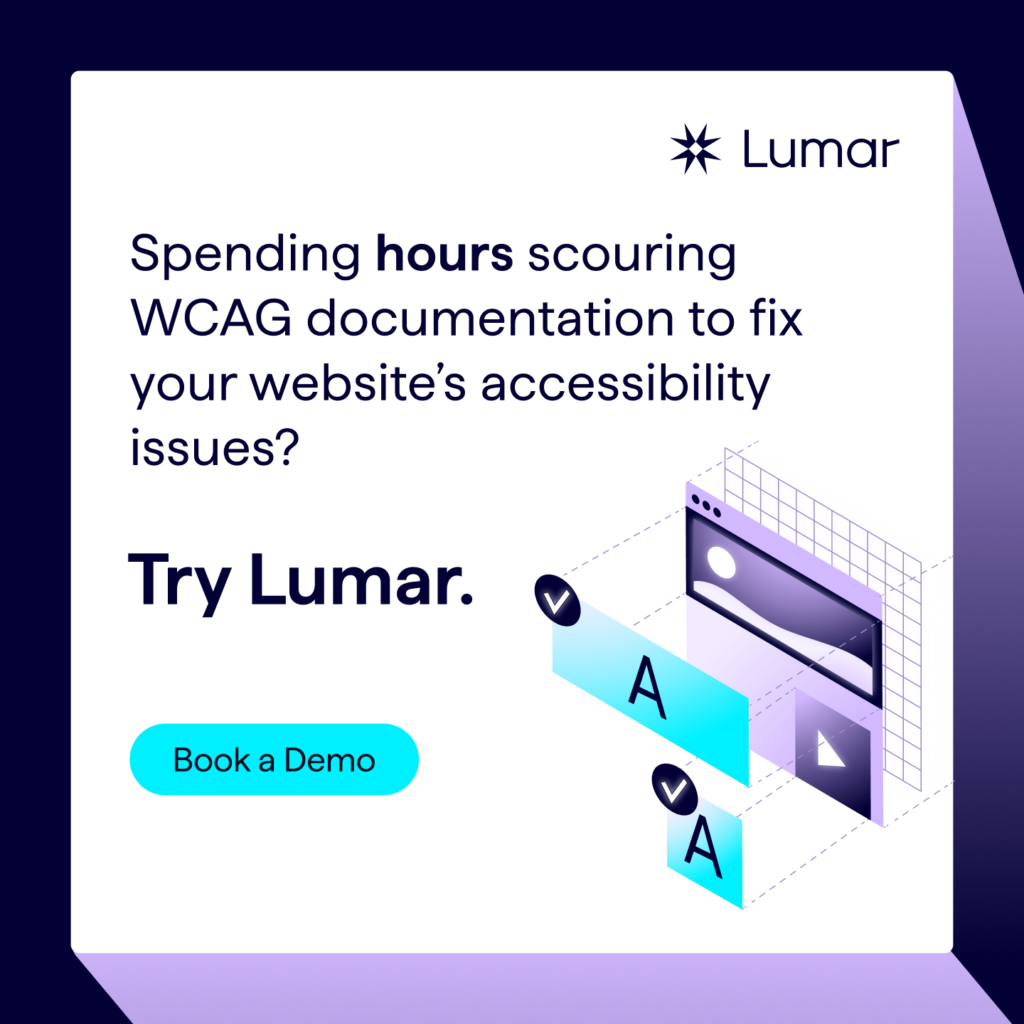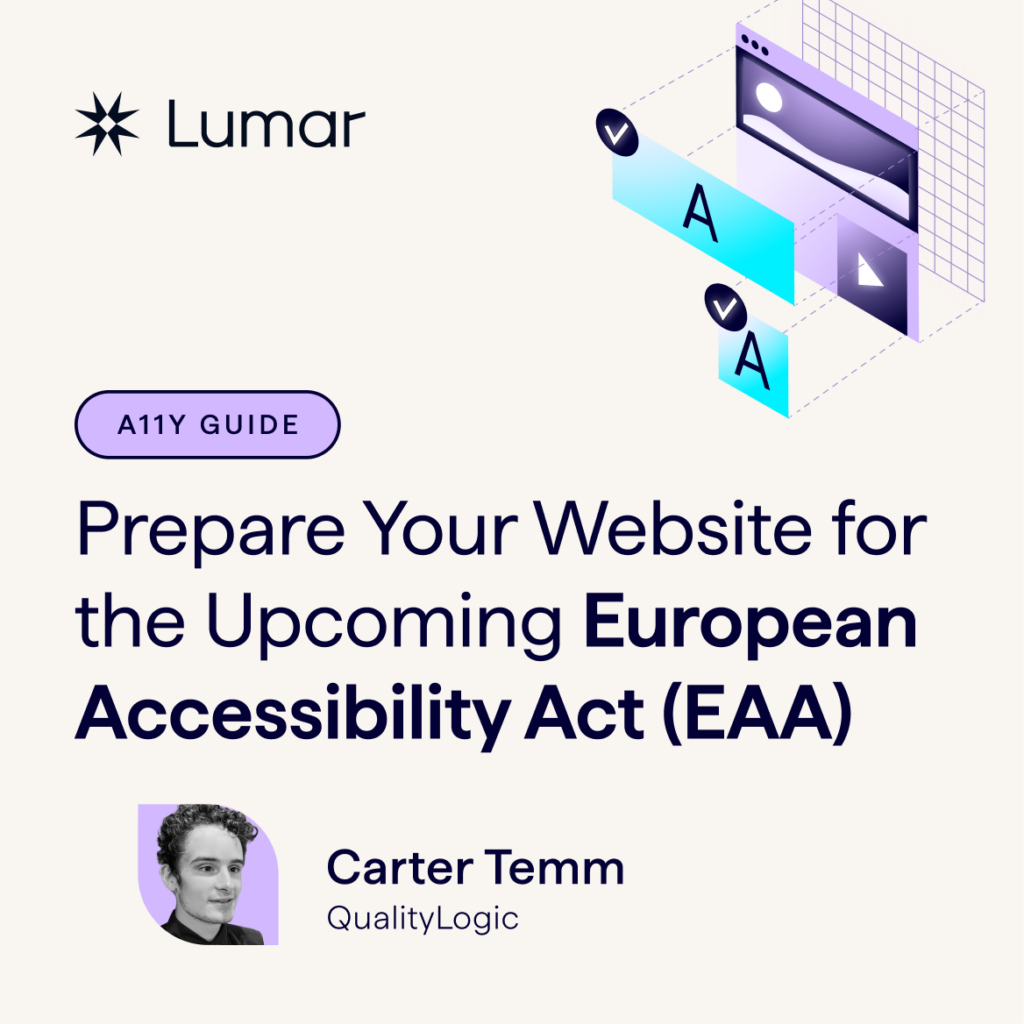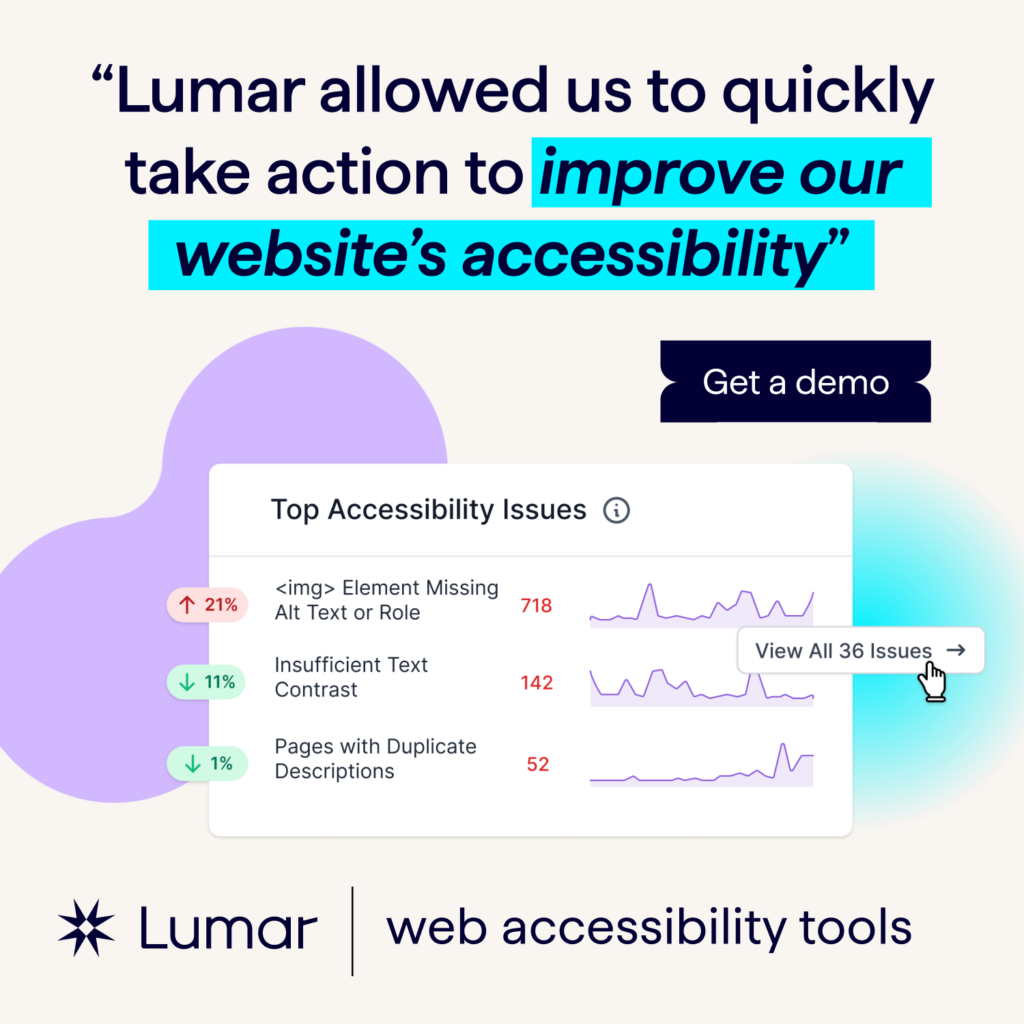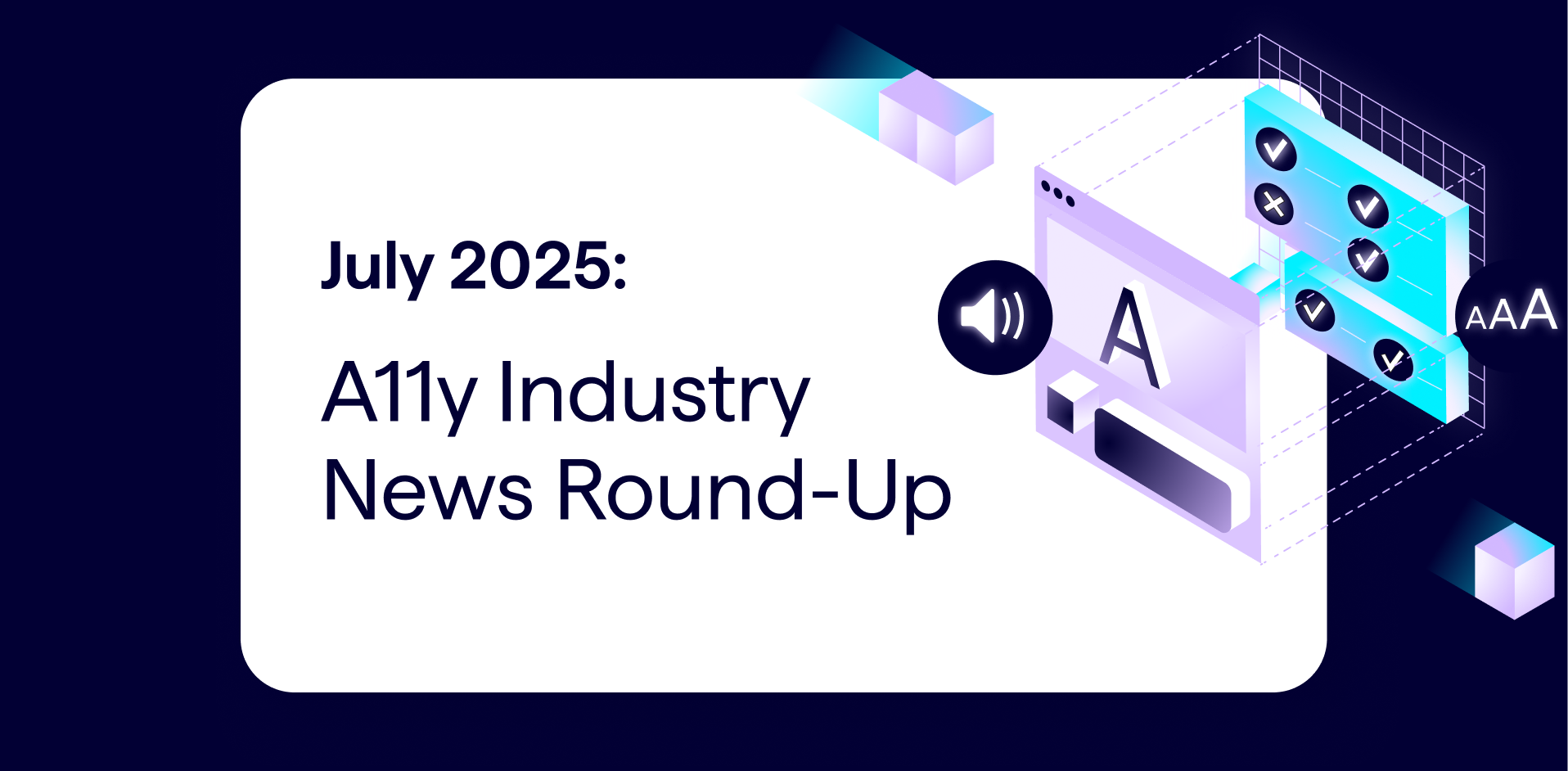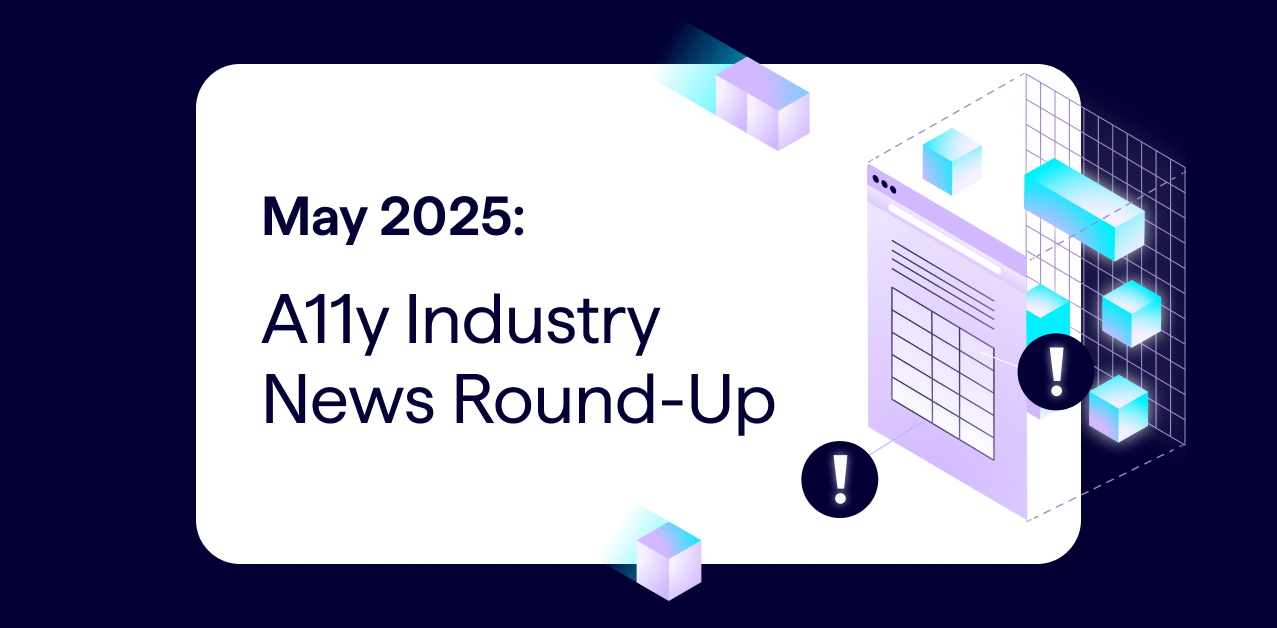What happened in web accessibility news this month?
Each month, the Lumar team rounds up some of the top headlines for website managers and web accessibility professionals.
For our June 2025 a11y news roundup, the top headlines include:
- The European Accessibility Act (EAA) is finally here! — As of June 28, companies doing business in the EU will now be subject to a new set of digital accessibility compliance rules, aligned to WCAG 2.1 Level AA standards. (Psst… Lumar’s accessibility tools can help you achieve EAA compliance, if your website isn’t there quite yet.)
- Only 31% of major European fintech companies evaluated meet basic accessibility standards, according to a TestDev study
- WCAG 3.0 (still in draft status) may change how web accessibility compliance is evaluated with its proposed shift from A/AA/AAA conformance levels to less binary Bronze/Silver/Gold tiers.
- Nearly 100% of emails tested had significant a11y issues, in a new study by the EMC
- Forbes has launched its first “Accessibility 100” list to celebrate people impacting and innovating in the accessibility field
- AIMAC (AI Model Accessibility Checker) files are now open-sourced on GitHub
- and more!
Read on for the top digital accessibility news stories this month.
The European Accessibility Act (EAA) goes into effect on June 28, 2025
It’s finally here — the European Accessibility Act (EAA) is officially going into effect on June 28. This will require businesses doing business in Europe to meet WCAG 2.1 Level AA standards.
We’ve covered the EAA at length over the past year, and highly recommend checking out our EAA resources, including:
- (Article) How to Prepare Your Website for Upcoming European Accessibility Act (EAA) Regulations
- (On-Demand Webinar) Preparing Your Website for the June 2025 EU Accessibility Act
(Source: European Commission – AccessibleEU )
A majority of Europe’s fintech firms are not prepared for the new EAA web accessibility rules
A study of 100 of Europe’s largest fintech companies conducted by TestDevLab ahead of the new EAA laws coming into effect this month found that only 31% of Europe’s largest 100 fintechs fully meet basic web accessibility requirements regarding keyboard navigation and focus visibility.
Fintechs that fully met keyboard navigation and focus visibility standards in the TestDev study included: Starling Bank (UK), Zopa (UK), Funding Circle (UK), ClearBank (UK), N26 (Germany), Nets (Germany), Nuri (Germany), Adyen (Netherlands), Holvi (Finland), Ibanity (Belgium), Fintonic (Spain), and others.
Elīna Šiškeviča, Digital Accessibility Testing Department Lead at TestDev, said, “Financial service products should be accessible to everyone, but our study demonstrates that this is still far from the case. An inclusive internet environment is not only a basic right, but it also drives business, which stands to access a wider user base by making their websites accessible.”
(Sources: TestDev + Emerging Europe + FinTech News )
99.89% of emails contain accessibility issues, according to new report
The Email Markup Consortium (EMC)’s third annual Email Accessibility Report 2025 is now live, and the findings are a bit dismal. Some key insights from 400,000+ emails they tested include:
- 99.89% of emails tested contain accessibility issues categorized as “Serious” or “Critical”
- Only 21 emails (< 0.01% of 443,585 tested!) passed all accessibility checks. What’s more: these 21 emails all came from a single author representing two separate brands.
The EMC concludes that this widespread issue in email accessibility is in part due to systemic problems like email builder platforms generating inaccessible HTML markup and email clients themselves failing to support key HTML/CSS features that would enable dev teams to build more accessible HTML emails.
(Sources: EMC’s 2025 Email Accessibility Report + QualityLogic)
WCAG 3.0’s new proposed scoring models may change how web accessibility is evaluated
W3C’s WCAG 3.0 standards are still in draft mode, but their initial outline suggests a changing approach to how web accessibility conformance should be evaluated, according to software engineer Mikhail Prosmitskiy’s detailed review of the WCAG 3.0 draft in Smashing Magazine.
He writes: “Rather than asking whether a requirement is technically met, it asks how well users with disabilities can complete meaningful tasks. Its new outcome-based model introduces a flexible scoring system that prioritizes usability over compliance, shifting focus toward the quality of access rather than the mere presence of features.”
The W3C’s WCAG 3.0 explainer doc’s section 7, on conformance approach, states:
“WCAG 3.0 will use a different conformance model than WCAG 2.2 in order to meet its requirements. Developing and vetting the conformance model is a large portion of the work AG needs to complete over the next few years. Drafts will include maturity models for public review and comment.
AG is exploring a model based on Foundational Requirements, Supplemental Requirements, and Assertions.
The most basic level of conformance will require meeting all of the Foundational Requirements. This set will be somewhat comparable to WCAG 2.2 Level AA.
Higher levels of conformance will be defined and met using Supplemental Requirements and Assertions. AG will be exploring whether meeting the higher levels would work best based on points, percentages, or predefined sets of provisions (modules).”
The WCAG 3.0 draft documents suggest that the traditional WCAG A / AA / AAA levels could be replaced with Bronze, Silver, and Gold tiers, inviting teams to tackle specific user flows or features iteratively.
I highly recommend giving Prosmitskiy’s piece a read if you want to learn more about what website accessibility may look like when WCAG 3.0 is eventually complete.
(Source: Smashing Magazine + W3C WCAG 3.0 Explainer)
AIMAC (AI Model Accessibility Checker) files are now open-sourced on GitHub
The AIMAC (AI Model Accessibility Checker) Leaderboard measures how well LLMs generate accessible HTML “out-of-the-box” using neutral prompts without specific accessibility guidance. The project is led by Joe Devon, Chair of the GAAD Foundation, and Eamon McErlean, VP and Global Head of Digital Accessibility at ServiceNow.
Starting this month, the AIMAC team is making AIMAC files open-source on GitHub.
(Sources: AIMAC Leaderboard + AIMAC on Github)
Forbes has launched its inaugural “Accessibility 100” list to celebrate people impacting and innovating in the accessibility field
At the Cannes Lions International Festival of Creativity this month, Forbes introduced its first Accessibility 100 list, recognizing 100 trailblazing individuals and organizations advancing accessibility for people with disabilities across sectors like technology, communication, mobility, education, software, consumer products, robotics, sports, travel, and more.
Some big tech companies that made the list include Apple, Google, and Meta, whose latest accessibility improvements we highlighted last month.
(Source: Forbes )
The new Audio Description Project (ADP) website is now live
The Audio Description Project (ADP), an initiative of the American Council of the Blind, has redesigned its ADP website for the first time in 20 years, with navigation improvements and new features to make it easier to find audio-described media, ADP training opportunities, and more.
As the ADP website’s FAQ section explains: “Audio description (AD) makes visual elements of media more accessible to people with visual impairment and other disabilities. AD describes actions and/or images in recorded films and tv shows, live broadcast events, live performances, and art. AD guides the listener through concise, objective descriptions of visual components that are crucial to understanding the creator’s intention.”
(Source: Audio Description Project )
Ready to improve accessibility & inclusivity on your own website?
Get a demo of Lumar’s website accessibility platform and start on your journey toward a more accessible, EAA-, ADA- and WCAG-compliant website.


